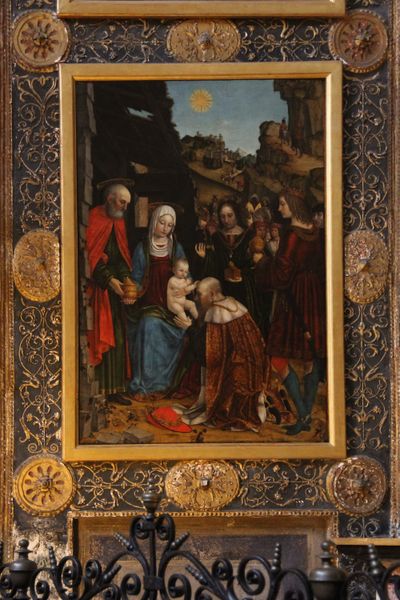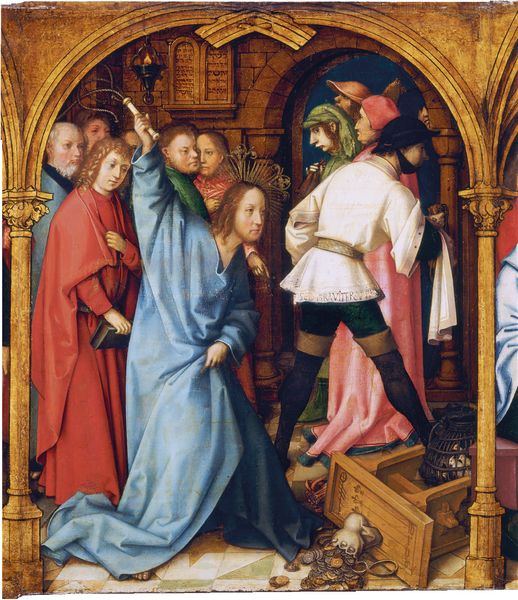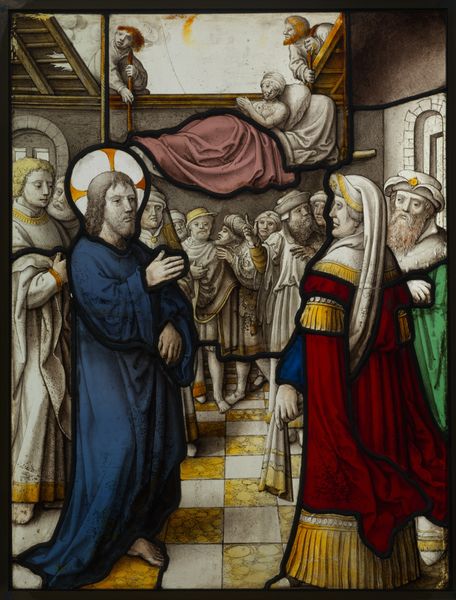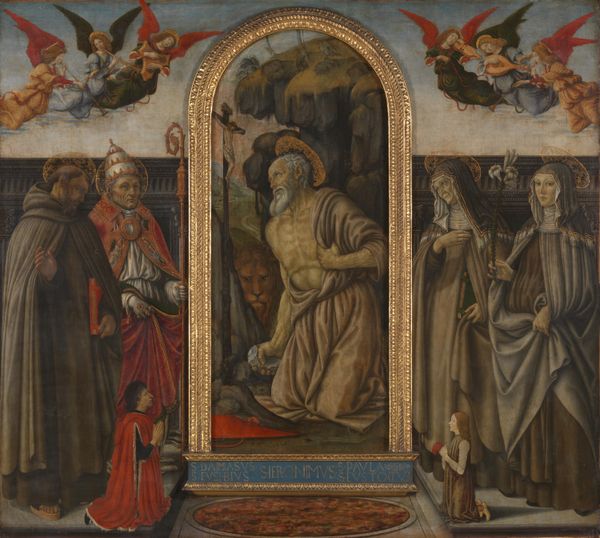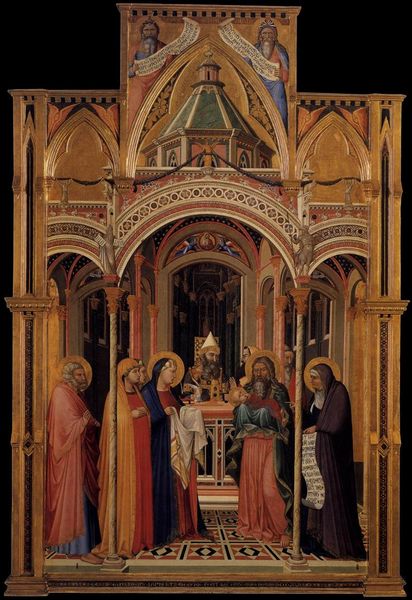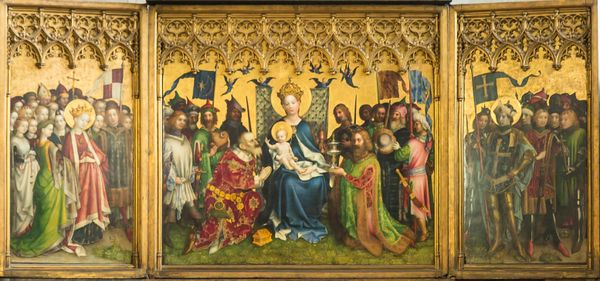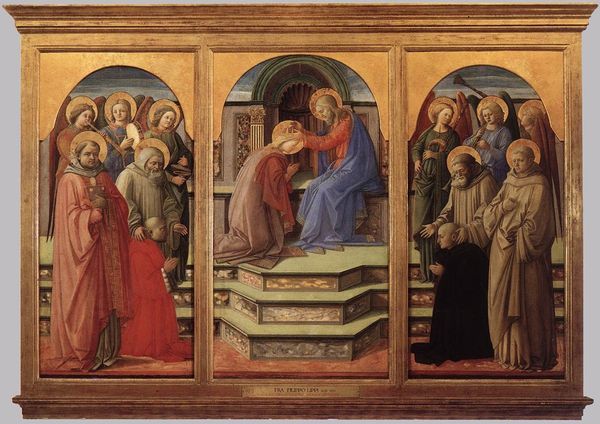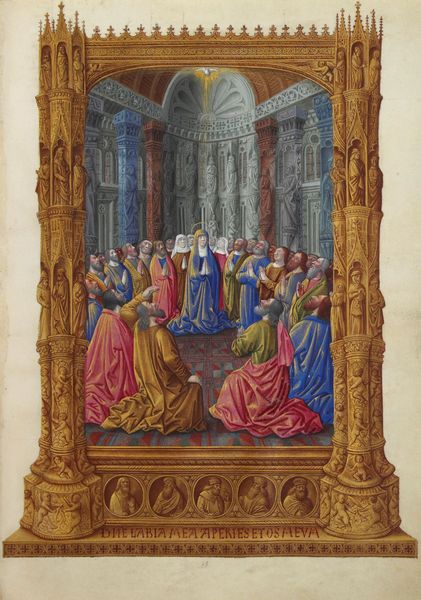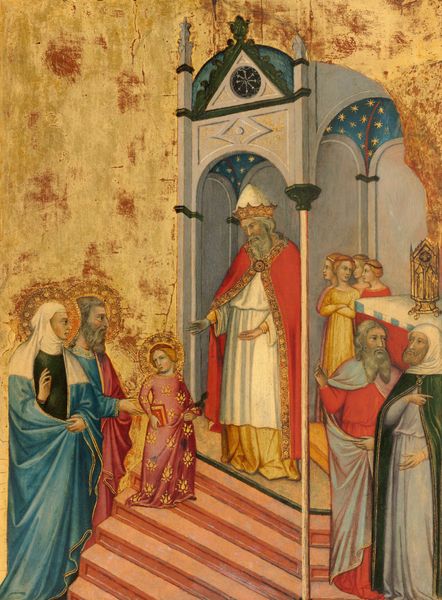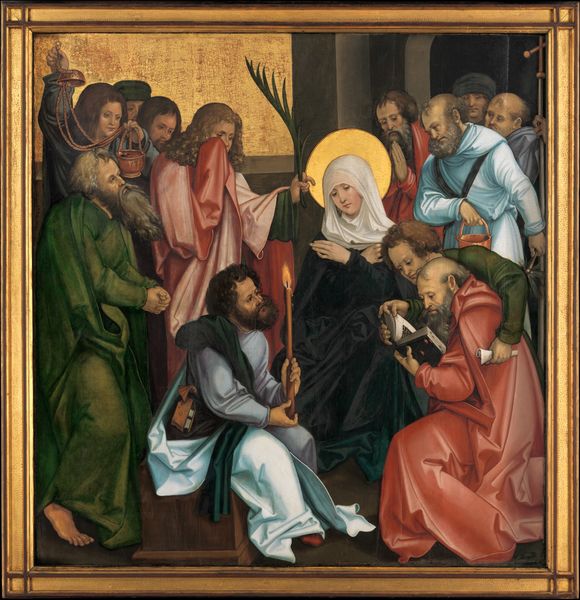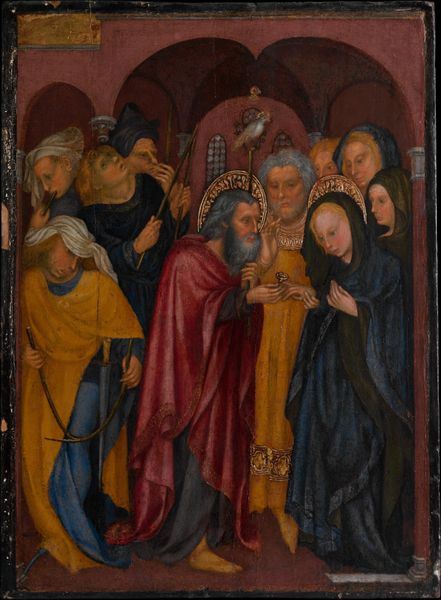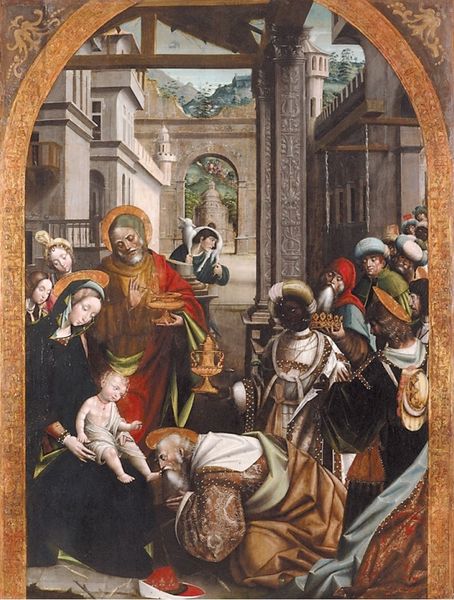
tempera, painting
#
portrait
#
tempera
#
painting
#
sculpture
#
figuration
#
traditional architecture
#
history-painting
#
italian-renaissance
Copyright: Public domain
Editor: Ambrogio Bergognone's, *Presentazione di Gesù al Tempio* – or Presentation of Jesus at the Temple, is such an interesting painting done in tempera! I am curious as to how the act of presentation itself contributes to its cultural meaning. What's your interpretation? Curator: Well, this piece presents an idealized vision of religious devotion in Renaissance Italy. Consider the carefully constructed architectural space – it's not merely a backdrop but a symbolic assertion of institutional power. Who do you think this piece might be intended to impress? Editor: Perhaps wealthy church patrons? Or maybe it was meant to remind everyday people of the church's authority? Curator: Precisely! Bergognone strategically employs Renaissance artistic conventions to reinforce religious doctrines and solidify the Church's influence within society. Notice the balanced composition, the serene expressions, and the luxurious fabrics - all meant to evoke reverence and awe. These aren't just aesthetic choices; they're carefully crafted visual arguments. Does the scale or prominence suggest anything about the intended audience or the importance of the piece? Editor: Given the detailed, expensive medium, it's pretty obvious it wasn't a small work. Scale likely allowed for larger audiences to see the details but also conveyed status, not unlike religious structures that dominate skylines. The traditional architecture feels idealized and meant to portray both stability, authority, and grandeur. Curator: Exactly. By understanding the cultural and institutional forces at play, we can begin to unpack how artworks like this contributed to shaping and reinforcing dominant social norms and power structures in their time. The arts served a public and often very political purpose. Editor: It's amazing to think that something so beautiful could also be so purposeful in shaping societal views! Curator: Absolutely! Every detail – from the figures' placement to the architectural setting – speaks volumes about the intricate relationship between art, religion, and society during the Italian Renaissance.
Comments
No comments
Be the first to comment and join the conversation on the ultimate creative platform.
